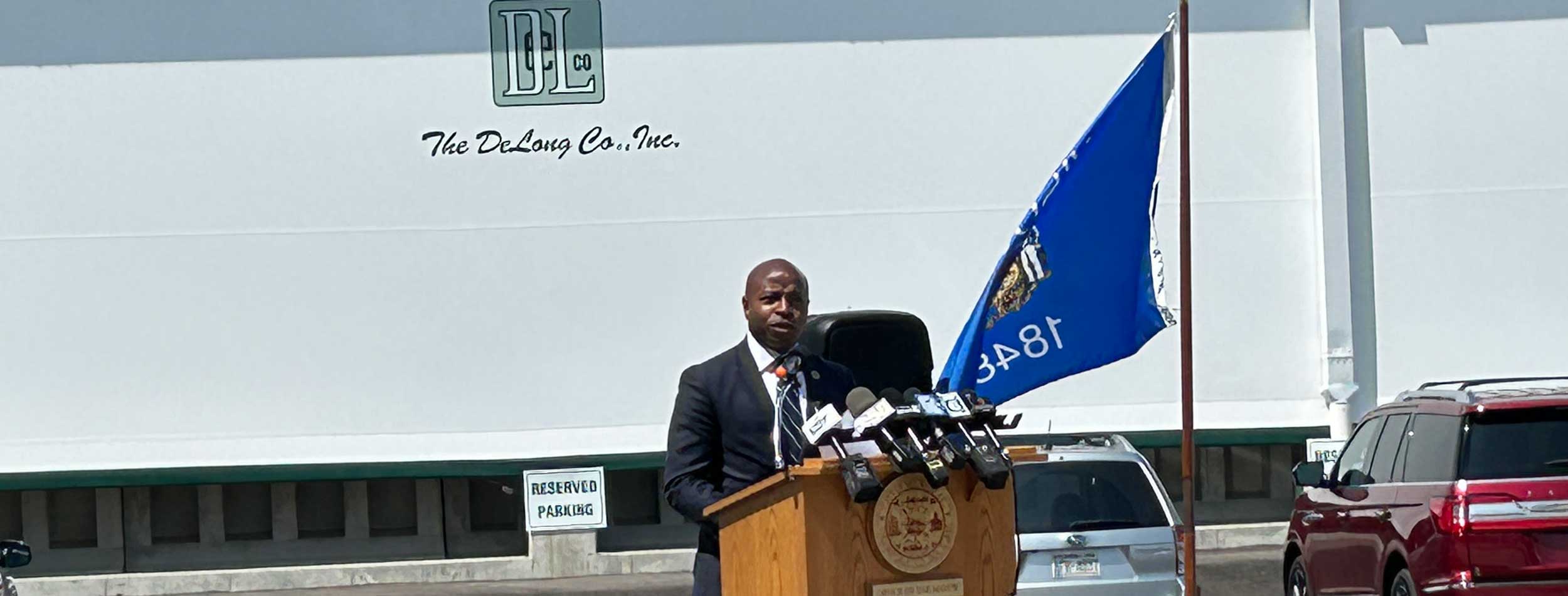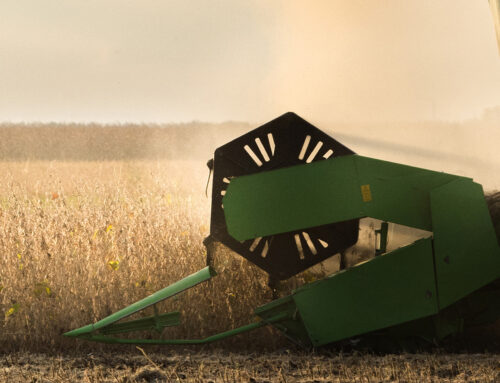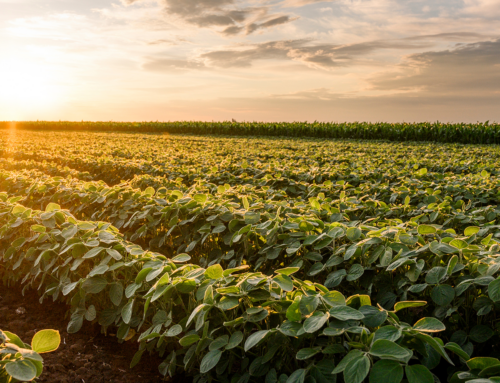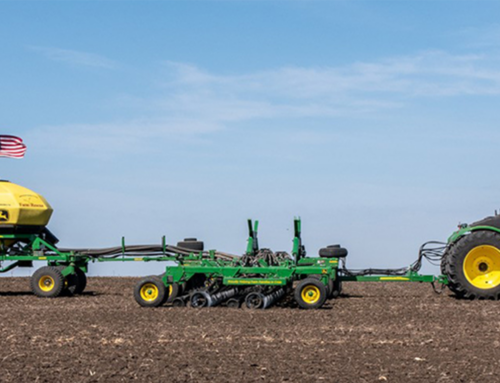
Agricultural Maritime Export Facility gets grandest of openings
Share This
The word of the day at the grand opening of the DeLong Co.’s Agricultural Maritime Export Facility at the Port of Milwaukee might have been partnership, but in farm country, the better word should have been opportunity.
City, state and federal officials were among the many to hear about the new facility, cheer its many accomplishments, including a shipment of Wisconsin-produced Dried Distillers Grains with Solubles (DDGs), and dream about the possibilities the facility brings to different sectors of the Wisconsin’s agricultural industry.
“This is a really important day for Wisconsin agriculture,” said Pat Mullooly, a DeLong Co. agronomist, farmer and chair of the Wisconsin Soybean Marketing Board. “This facility gives us another avenue to move soybeans, and specifically soybean meal, to markets we know are growing and looking for U.S. soy.”
While DDGs served as the first shipment, Bo DeLong vice president of grain, said the goal is to eventually ship other grains and feedstuffs, such as soybean meal, to markets in Western Europe and Northern Africa.
“This facility is one of the first on the Great Lakes-St. Lawrence Seaway to handle various agricultural commodities via truck, rail, barge and international vessel,” DeLong said.
DeLong’s Agricultural Maritime Export Facility will be capable of storing 45,000 metric tons of soybeans, and 30,000 metric tons of DDGs. The rail is served by Union Pacific and Canadian Pacific Railroads, with 100-hopper-car rail capacity.
When it comes to outbound transportation, DeLong said the facility will load vessels with a capacity of 7,000 to 22,000 metric tons, as well as barges. The facility will be able to load 1,000 metric tons per hour, with an annual export capacity of 400,000 metric tons.
The project was the result of a private-public partnership between the Port of Milwaukee, the DeLong Co., Inc., the state of Wisconsin and the United States Department of Transportation.
“Milwaukee is becoming a much larger part of Wisconsin’s agricultural economy with this new facility,” said Milwaukee Mayor Cavalier Johnson. “This building represents the largest, one-time investment in the Port of Milwaukee since the 1950s. This is big.”
Feasibility study
Mullooly said DeLong’s new facility represents an opportunity for exporting soybean meal. WSMB funded a feasibility study to determine if a soybean crushing facility would work for the state of Wisconsin. Early indications show opportunities exist in west-central and southern Wisconsin.
“We’ve identified a couple of locations that make sense,” Mullooly said. “Of course, there’s more work to be done. Sometimes the work is meeting with our industry partners and sharing what we’ve learned.”
According to the WSMB feasibility study, a local processing facility (within a 100-mile radius) typically improves basis by 12 to 15 cents, which adds value back to soybeans sold in the vicinity of the facility.
“In an ideal world, we’d have a crush facility somewhere in the southern part of the state that could be a willing customer to a facility such as DeLong’s,” he said. “Until then, WSMB is committed to funding research and projects that bring value back to our fellow soybean farmers.”



